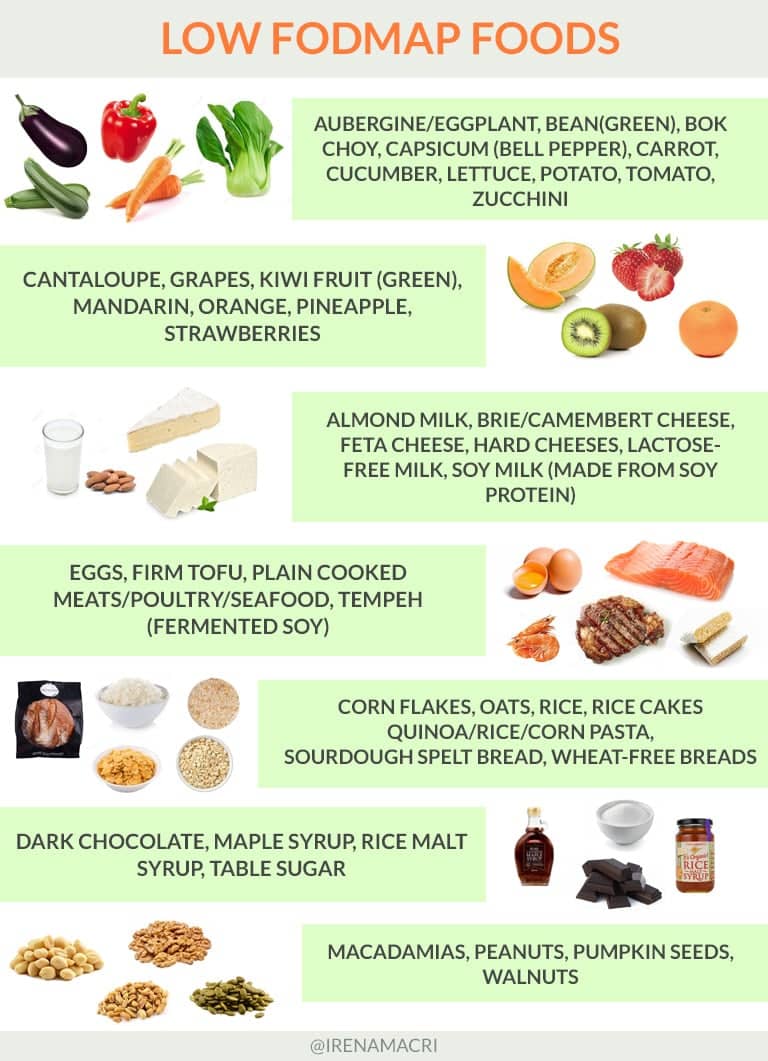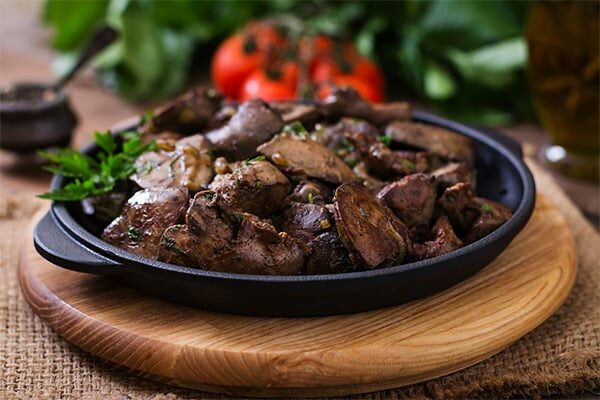Have you ever wondered about the low FODMAP diet? Or rather a Low FODMAP diet? I have recently had a few requests from readers to share more recipes and meal ideas with low FODMAP foods and ingredients, so I thought it might be useful to put together a series of blog posts covering the topic. I’ve had some personal practical experience cooking low FODMAP recipes, so I hope to share some useful tips and ideas on the blog.

What Is A Low FODMAP Diet?
A diet low in FODMAPs is essentially a type of elimination diet. Often, a low FODMAP diet is implemented as a healing protocol for irritable bowel syndrome (IBS) or to treat small intestinal bacterial overgrowth (SIBO).
A low FODMAP diet is a 3-step approach to healing digestive issues that includes elimination and reduction, reintroduction, and personalisation.
Other elimination diets include allergy elimination diet, keto, paleo, and autoimmune paleo (AIP). The goal of all elimination diets is to first reduce or eliminate specific foods or food groups that might be a culprit for certain reactions and symptoms. Later, you might reintroduce these foods or increase their intake to observe which ones impact you poorly or – in the case of many elimination diets – increase autoimmune markers and flare-ups.
What Does FODMAP Stand For?
FODMAP is an acronym that stands for fermentable oligosaccharides, disaccharides, monosaccharides, and polyols. In other words, these are types of carbohydrates or sugars.
- Fructose is found in fruits and sugary foods as well as some vegetables.
- Lactose is found in dairy.
- Fructans are found in grains.
- Galactans are found in beans and lentils.
- Polyols are found in sugar alcohols like xylitol, sorbitol, and maltitol.
These particular types of short-chain carbohydrates are more likely to resist digestion which ultimately leads to digestive issues. They pass through the small intestine slowly which attracts water. Later, they ferment in the gut which can cause pain, bloating, gas, diarrhoea, and other GI issues. Many people are fine with FODMAPS even if they do experience these symptoms. However, those with preexisting issues such as SIBO and especially with IBS could consider a low FODMAP diet to see if they are being impacted by these specific foods.
FODMAP Rating
Foods rich in these carbohydrates are known as high FODMAP foods. There is a rating for each food in terms of FODMAP content. Foods are ranked high (red), moderate (orange), or low (green) which can help to determine how often they should be eaten, what foods should be avoided, and what foods will be considered as main staples. Certain foods’ ratings depend on the amount consumed or how it’s prepared.
FODMAP Diet & Monash University
FODMAPs were identified in 2005 by the Department of Gastroenterology at Monash University. They measured FODMAP content in many individual foods and followed up with identifying the mechanisms by which FODMAPs trigger symptoms of IBS. Monash University has also extensively studied non-coeliac gluten sensitivity or negative reactions to wheat without having Coeliac’s disease.
You can download their simple guide to Low Fodmap Diet here. They have also developed a comprehensive app ranking ALL foods using their high to low FODMAP ratings.

Who Might Benefit From A Low FODMAP Diet?
The main group of people who might benefit from a low FODMAP diet are those who suffer from IBS or SIBO. A low FODMAP diet can also help people who suffer from similar symptoms such as bloating, gas, indigestion, and diarrhoea.
High FODMAP Foods To Avoid
- Garlic & onions
- All beans & lentils
- Wheat and wheat-based products and rye (in large amounts); gluten-based bread or muffins
- Vegetables: artichokes, asparagus, sugar snap peas and green peas
- Fruit: Watermelon, peaches, apples, cherries, nectarines, pears, mango, avocadoes, dried fruit
- Meat/protein: sausage/processed meat, breaded fish or meat
- Pistachios, cashews and almonds
- Plain cow’s milk and yoghurt, ice cream, custard
- Honey and high fructose corn syrup

Low FODMAP Foods To Include
- Protein: Meat, fish, seafood, eggs, tofu, tempeh (fermented soy)
- Most oils and fats, peanuts
- Vegetables (with the exception of onions, artichokes, asparagus, cruciferous family and foods otherwise listed as high FODMAP)
- Fruits: Bananas, melons (with the exception of watermelon), kiwi, grapes, citrus (lime, lemon, grapefruit, etc.)
- Grains: Corn, oatmeal, quinoa, rice
- Dairy: hard cheese, brie, camembert, and feta cheeses, lactose-free milk, ice cream, and/or yoghurt.
- Dark chocolate, maple syrup, rice malt syrup, table sugar
- Sourdough bread in moderation
- Coffee and tea

In essence, most nuts, seeds, fruits, and fats are included in a low FODMAP diet besides specific ones which I’ve listed amongst the foods to avoid e.g. pistachios, cashews, and watermelon. Often, these outliers are prebiotic foods which are quite healthy for people without IBS. In fact, they’re notoriously good for gut health otherwise. You should always double-check if you’re uncertain, but you will be a pro in no time!
How To Start & Follow A Low FODMAP Diet
As mentioned above, the low FODMAP protocol is easily divided into three distinct steps. You can read more from The Monash FODMAP Diet here.

Step 1. Elimination
The initial introduction to the low FODMAP diet should last 2-6 weeks. The approach is simple, but it definitely requires some research. You simply want to begin by swapping high FODMAP foods with low FODMAP foods. It is best to stick to low FODMAP foods and also eliminate foods in the ‘moderate’ ranking.
The Monash traffic light system will help you learn more about which foods rank where in terms of FODMAP content. This is a great tool as you work through a new diet and also in the reintroduction and personalisation phases.
During this time, the ideal outcome is that IBS symptoms improve or dissipate. If so, you can proceed with the next step which will help you fine-tune your understanding of which foods are problematic. However, there is a chance that FODMAPs are not exacerbating your symptoms. In this instance, you will need to consider alternative treatment methods.
Step 2. Reintroduction
Next up is the reintroduction phase. The goal is to develop an understanding of specific FODMAP triggers. In order to figure this out, you will reintroduce one carbohydrate group at a time. This is where you will want a good guide as you will need to choose foods that contain just one FODMAP and no others. You will use this food to monitor symptoms for up to three days and determine whether or not it causes an IBS flare or worsens symptoms.
The Monash FODMAP app: includes FODMAP challenges to help guide you through step two. Moreover, it includes a function for monitoring symptoms in a diary.
Step 3. Personalisation
This is where you implement semi-permanent changes. In any elimination diet, the goal is to continue on eating as many foods as possible that don’t cause adverse side effects so as to best to enjoy life, cooking, and eating! You will get to know which foods are good for a treat and which simply aren’t worth it at all. Well-tolerated foods should be focused on and poorly tolerated foods should be avoided or used for FODMAP challenges down the road to observe potential changes.
Best Low FODMAP Diet Resources

Apps:
Monash FODMAP Diet App – this a must-have for anyone doing low-FODMAP protocol!!!
Books:
- The Low FODMAP Diet Step by Step
- The Low-FODMAP Diet for Beginners: A 7-Day Plan to Beat Bloat and Soothe Your Gut with Recipes for Fast IBS Relief
- The Low FODMAP Cookbook
- The 28-Day Plan for IBS Relief
- The Gut-Friendly Cookbook
Podcasts & YouTube Videos
- The Gut Loving podcast
- FODMAP Reintroduction (Complete Guide to Finding Your Triggers)
- Starting The LowFODMAP Diet: 12 Tips I Wish I Knew Before!
Low FODMAP Meal Delivery
- Epicured (continental U.S.)
- Modify Health (nationwide U.S.)
- We The Trillions (San Francisco meals, snacks and staples continental U.S.)
- We Feed You (nationwide Australia)
- Wholesomeness (Brisbane)
Low FODMAP Food Brands
- Fody Foods vegan variety pack sauces (Low FODMAP certified)
- Fody Foods protein nut bars
- Fodilicious vegan cookies
Hopefully, now you have a better understanding of FODMAPs, what a low FODMAP diet can help achieve, and whether or not you should consider this particular elimination diet for yourself.
For sufferers of IBS and SIBO, this therapeutic approach can be extremely powerful. Even for those who simply find themselves bloated often, sensitive to wheat, or possessing the desire to address GI pain, low FODMAP can be a worthwhile commitment. Yes – it can be hard – but there are some incredible resources that make figuring things out really straightforward.
Save This Low FODMAP Guide To Pinterest







I read this page carefully, and found it interesting, UNTIL, tomato was listed under vegetables, Tomato is a fruiot.
Technically, it’s not actually saying it’s a vegetable!!! It’s displayed in the picture with savoury plant foods that you would use for savoury dishes. I am well aware it’s a fruit. Come one, now!
This has been an absolute blessing for me. It sucks that 2 of my triggers are butternut squash and apples, but discovering that has made my life way easier. Thanks for providing this great information Irene!! Your blogs are always so informative nad helpful!!
Thanks for this. One thing: Medical News Today also has an article on FODMAP dieting and they specifically list broccoli in their list of LOW FODMAP foods! Who to believe?! Personal trial and error is obviously important, but it’d be good to have a reliable base to start a diet from, can you verify that information? Thanks!
Definitely not a low fodmap food! It’s a cruciferous veggie and sadly they are all high in fodmaps and can give you serious gas/bloating. If you cook the crap out of broccoli, it is much easier to digest, so perhaps something like a pureed broccoli soup might not be so bad.
P.S. If in double, cross-check with Monash university resources as they are the most reliable/trusted…they came up with the whole diet concept.